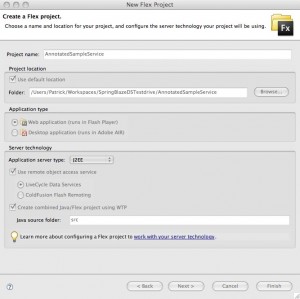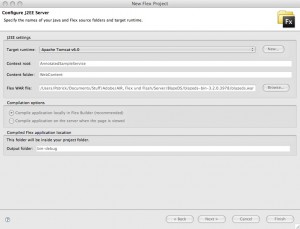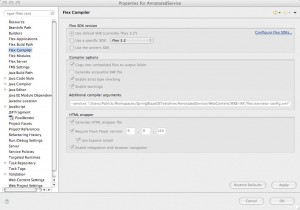When I joined the private prerelease of Adobe for the current the Open Source Media Framework last year, the code name of the project was Strobe and was changed after a while by the Adobe Marketing into the current name. My confusion was perfect as the Strobe Media Playback entered the stage and reused the code name …… Now Adobe provides also the Flash Media Playback.
So I decided to blog about Adobe’s current Video Player projects, because there are at the moment different projects for Video and Media Player provided by Adobe. This post should clearify the difference between all the projects.
Open Source Media Framework (OSMF)
The Open Source Media Framework is open source project developed by Adobe and their partners like Akamai. The frameworks should easy the development of custom Flash based Media or Video Players and should solve general problems and topic of the development of Video Players. The main goal of the project is to provide the code base for a players so that developers have only to focus on the integration with the site and user experience instead of write the basic logic of a player from scratch.
The framework provides the logic to play videos and audio (progressive download, DVR, RTMP or HTTP streaming) or display other media objects like SWF and images, the creation of playlists (sequenctial or parallel) and handles the DRM based on Flash Access 2.0.
Additionally, the Open Source Media Framework can be extended by using one or more of the existing plugins for Advertising, Analytics and Qualtity Service, Content Delivery and writing your own plugin to integrate the video player with backend.
The source code of OSMF also contains plugins for VAST 1 and VAST2 standard of the IAB (Interactive Advertising Bureau), which will be used by almost all major advertising companies.
Adobe hosts a special Market Place for OSMF, which provides a couple of plugins for OSMF.
The solution targets developers who want to write their own video players based on ActionScript or Flex and provides the basic logic to play videos.
Strobe Media Playback (Strobe)
The Strobe Media Playback is open source Media Player on top of the Open Source Media Framework. It’s sample implementation of an OSMF based video player and is available as compiled SWF or you can download source code and then start modifying the video player based on your needs. The Strobe Media Playback is an only ActionScript an can directly loaded by the Flash Builder.
The UI of the Strobe Media Playback provide the basic functions to start/pause videos, toggle full screen, change volume and change position of video playback.
Basically, the Strobe Media Playback is an replacement of the old FLVPlayback of Flash, which provides the latest features of the Flash Media Server Product Family.
Adobe is working also on a HTML5 version of the Strobe Media Playback, which can used as fallback solution for iOS devices or devices without Flash Player for example.
The solution targets persons/developers who need a basic video player and maybe change the visual appearance of the player to their custom chrome of their website. The Strobe Media Playback can also be used as an starting point for developement of your own video player be extending the Strobe with your logic.
Flash Media Playback
The Flash Media Playback is a hosted version of the Strobe Media Playback which will provided by Adobe . The Media Playback will be integrated into your website by copying and pasting the an Embed Code into your site. Adobe provides a configurator, which allows the creation of the Embed Code. This solution targets persons or organisation, who can’t/won’t develop or host their own video player, but need a video player to publish their video content.



